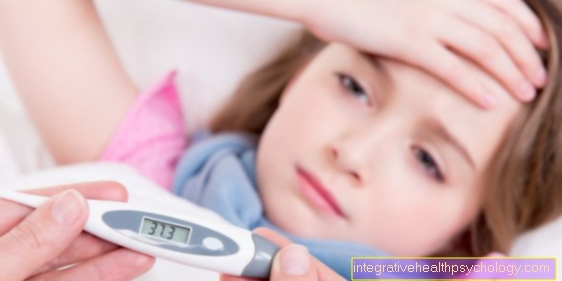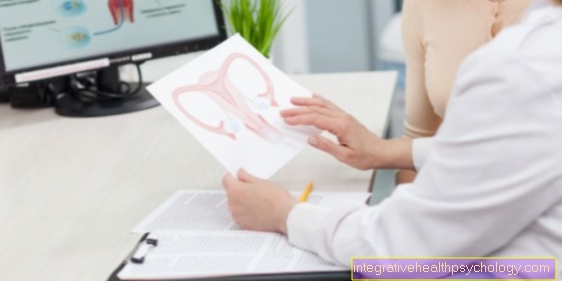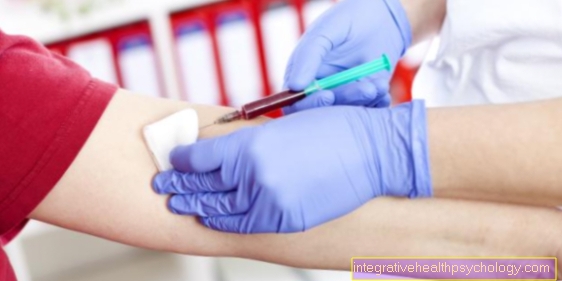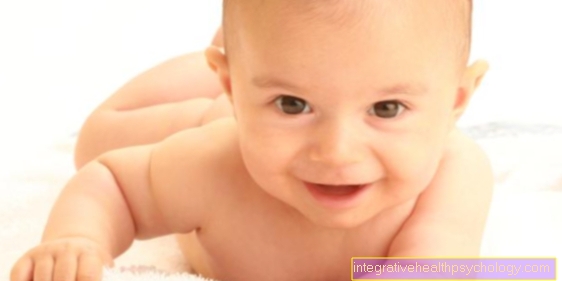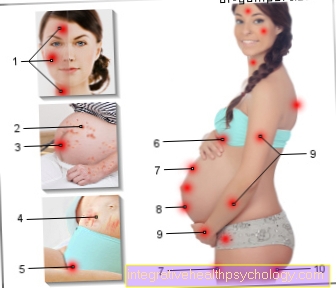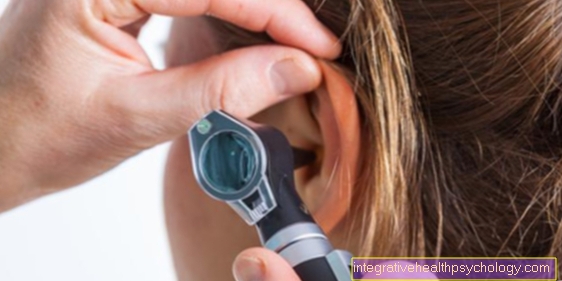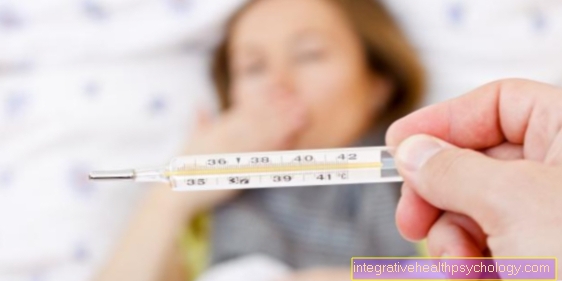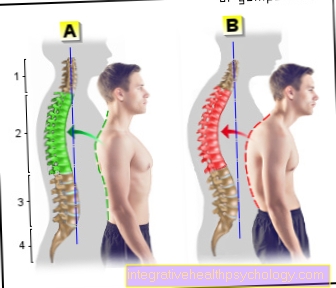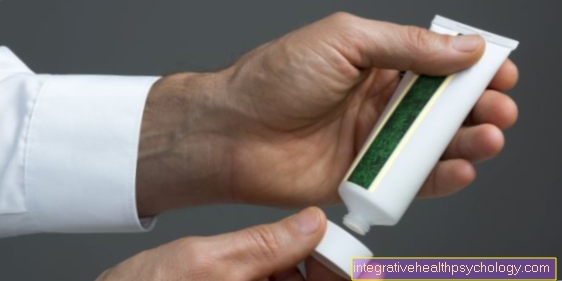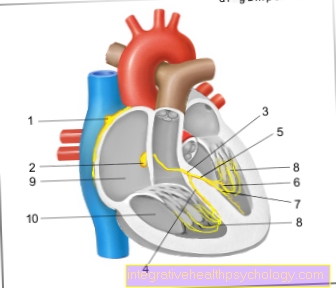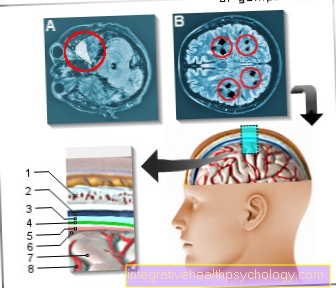Egg donation
definition
Egg donation is a reproductive medicine procedure. Egg cells are removed from the donor, which can then be artificially fertilized with a man's semen. The fertilized egg cells can then be inserted into the uterus by a recipient (or the donor herself). If the treatment is successful, the pregnancy process begins there and the embryo matures. The fertilized egg contains genetic material from the egg donor and the sperm donor.
Read more on this topic: Artificial fertilization
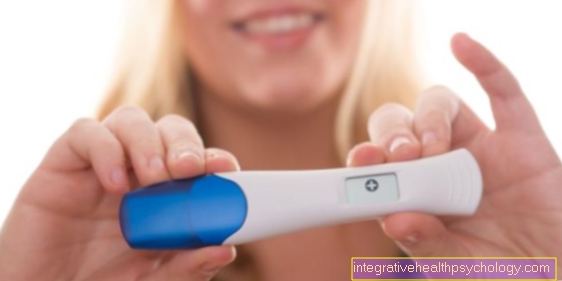
Indications for egg donation
There are numerous indications for egg donation. For example, cancer of the ovaries (Ovarian cancer) have made their removal or irradiation necessary. After such treatment, the patients no longer have their own (intact) egg cells. Even in advanced age near menopause or with premature menopause due to lack of estrogen, one's own fertility can be greatly reduced or no longer given due to declining follicular maturation. In order to still have a desire to have children, you have to resort to egg cells from other people. Genetic diseases can also be an indication, for example the so-called Turner syndrome, in which no proper functioning egg cells can be formed.
Read more about these topics: Estrogen deficiency and unfulfilled desire to have children
Egg donation can also be useful if it has been done in the past in vitro Treatments with your own egg cells have failed or sick embryos have repeatedly formed. In addition, some women choose to donate if their family is known to have serious illnesses and are concerned about passing them on to their children.
Some older women resort to egg cells from younger donors, as the older they get, the higher the risk of developing Down's syndrome.
procedure
Before the actual procedure, the menstrual cycles of the mostly anonymous donor and the recipient are synchronized with the help of hormone preparations. This is necessary because when the fertilized donor egg cells are inserted in the recipient's uterus, optimal growth conditions for the embryo must exist in order to enable implantation.
The actual egg donation process is divided into two phases. First there is hormonal stimulation of the donor's ovaries in order to stimulate egg production. Then the follicles of the ovary are punctured and the egg cells are sucked out through the vagina.
The rest of the process is similar to in vitro fertilization. The man's sperm obtained through masturbation are processed and injected into the removed egg cell using a microscopic injection needle. The fertilized egg cells are cultivated in the laboratory for 5 days and then transferred to the recipient's uterus. Fertilized eggs can also be frozen for later transfer. Before the fertilized egg cells are inserted, ultrasound is used to check the condition of the recipient's uterine lining. An estrogen preparation is taken, which builds up the uterine lining and prepares it for the implantation of the embryo. In the course of the treatment, the patient also takes the hormone progesterone. 2-3 embryos are inserted into the recipient's uterus via a catheter via the vagina and through the cervix. A first pregnancy test to measure success can be done around 14 days after the procedure. The hormone therapy is continued until the 12th week of pregnancy.
Duration
Egg donation includes not only the actual procedure, but further steps. This includes hormonal stimulation of the recipient. Depending on the reproductive clinic, the patient may have to go through a trial cycle, i.e. a hormonally supported menstrual cycle (28 days), to check the extent to which the uterine lining is able to build up. After the trial cycle, hormonal stimulation takes place for a further 14 days before the fertilized eggs can be inserted. After the egg cells have been removed from the donor and fertilized with the semen, cultivation takes place for 5 days. The embryos are then inserted into the recipient's uterus in a procedure that usually takes a few minutes.
Risks
Like all medical interventions, egg donation and the resulting pregnancy also involve risks.
The hormone treatment that is carried out before egg donation is often accompanied by undesirable side effects such as nausea and vomiting. Furthermore, a so-called ovarian hyperstimulation syndrome can develop. This serious complication occurs rarely, but in its serious form it can lead to ovarian cysts, ascites (Azsites), Shortness of breath (Dyspnea), as well as coagulation disorders.
The surgical procedure also carries the usual risks of bleeding, infections and anesthetic complications.
The possibility of a missed pregnancy exists especially with increasing age of the egg recipient. Since the donated egg contains a different genetic material, there is a risk that the embryo will be rejected in the uterus and that a miscarriage will occur. It can also lead to fetal malformations and other complications during pregnancy. This includes the increased likelihood of a so-called egg donation after egg donation Gestational hypertension to become ill, i.e. increased blood pressure during pregnancy. This can lead to the life-threatening HELLP syndrome with accompanying seizures and bring danger to the child.
Many patients want to hide the nature of their pregnancy. However, this can lead to the egg recipient not being classified as a high-risk patient with an increased need for medical checks due to further medical care. Therefore, honesty towards one's own gynecologist is indispensable and essential for adequate medical care.
In addition, egg donation increases the likelihood of a multiple pregnancy, which is always more complicated than a one-child pregnancy. Not to be neglected are the late effects, such as psychosocial problems, which can arise when the child is informed about the nature of its origin and has to become aware of the anonymity of its mother.
What is the success rate?
The success rates of induction of pregnancy through egg donation vary greatly. Many factors are taken into account, such as the age of the recipient, hormonal disorders or endometriosis. Every reproductive clinic has its own statistics, which include the factors mentioned and many more. In general, the chances of success are estimated at around 30-40%.
Twins
In order to increase the chances of success of an egg donation, two to three embryos are usually transferred, as the procedure is fraught with a serious failure rate. However, all transferred embryos can also implant and grow. This increases the likelihood of multiple pregnancies after egg donation with subsequent in vitro fertilization. The occurrence of twins is about 20 times more common than in a conventional pregnancy.
Where can egg donation be done?
Egg donation is forbidden in Germany (as of July 2017), although there are currently numerous discussions about it and there are increasing voices calling for egg donation to be legalized. At the moment, you have to travel to special clinics abroad for egg donation, which is why the term 'reproductive tourism' came about. Egg donation is officially permitted by law in Poland, the Netherlands, Belgium, the Czech Republic, Slovakia, France, Spain and England, for example.
You should deal well with the topic in advance and find out about the various fertility centers. You should also be aware that even with hormonal therapy before the actual egg donation, German doctors are not officially allowed to do medical work if it is clear that it is a treatment within the framework of egg donation. Therefore, a longer stay abroad or more frequent crossings to the respective country may be necessary.
Egg donation involves great effort and therefore also high costs. Low prices can compromise the quality of medical care and pose health risks. There are also reports that egg donors are being exploited financially. Thorough research and the use of experience reports can reduce such risks.

